Abstract
1 The effect of the 1,5-benzodiazepines, clobazam (10 and 20 mg) and triflubazam (20 and 40 mg), on sleep was studied in six healthy males using electroencephalography for sleep measures and analogue scales for subjective assessments of well being and sleep quality. The effect of clobazam was limited to the night of ingestion. There was some evidence from subjective assessments that the effect of triflubazam may have persisted beyond the night of ingestion. 2 No effect of clobazam or triflubazam was observed on total sleep time, stage shifts in the first 6 h or latency to the first rapid eye movement period of sleep. With clobazam sleep onset latency was shortened (P less than 0.05), but this effect was not seen with triflubazam. The latency to stage 3 was shortened by both drugs. There was evidence of reduced duration of awake (stage 0) activity and drowsy (stage 1) sleep with both drugs. 3 The percentage stage 1 sleep was reduced by clobazam (10 and 20 mg) and by triflubazam (20 mg) (P less than 0.05), though the effect was not significant with triflubazam (40 mg). Clobazam (20 mg) increased the percentage stage 2 sleep (P less than 0.05), but reduced the percentage stage 3 (P less than 0.01) and stages 3 + 4 (P less than 0.05) sleep. There were no other effects on percentage of total sleep time occupied by various sleep stages or in duration (min) of sleep stages, except that the duration (min) of sleep stages, except that the duration (min) of stage 2 sleep in the second 2 h interval of sleep was increased with clobazam (20 mg) (P less than 0.01). 4 Subjects reported impaired sleep with triflubazam (40 mg) (P less than 0.05), and a sense of less wakefulness the morning after ingestion of clobazam (10 and 20 mg) (P less than 0.01) and triflubazam (40 mg) (P less than 0.05).
Full text
PDF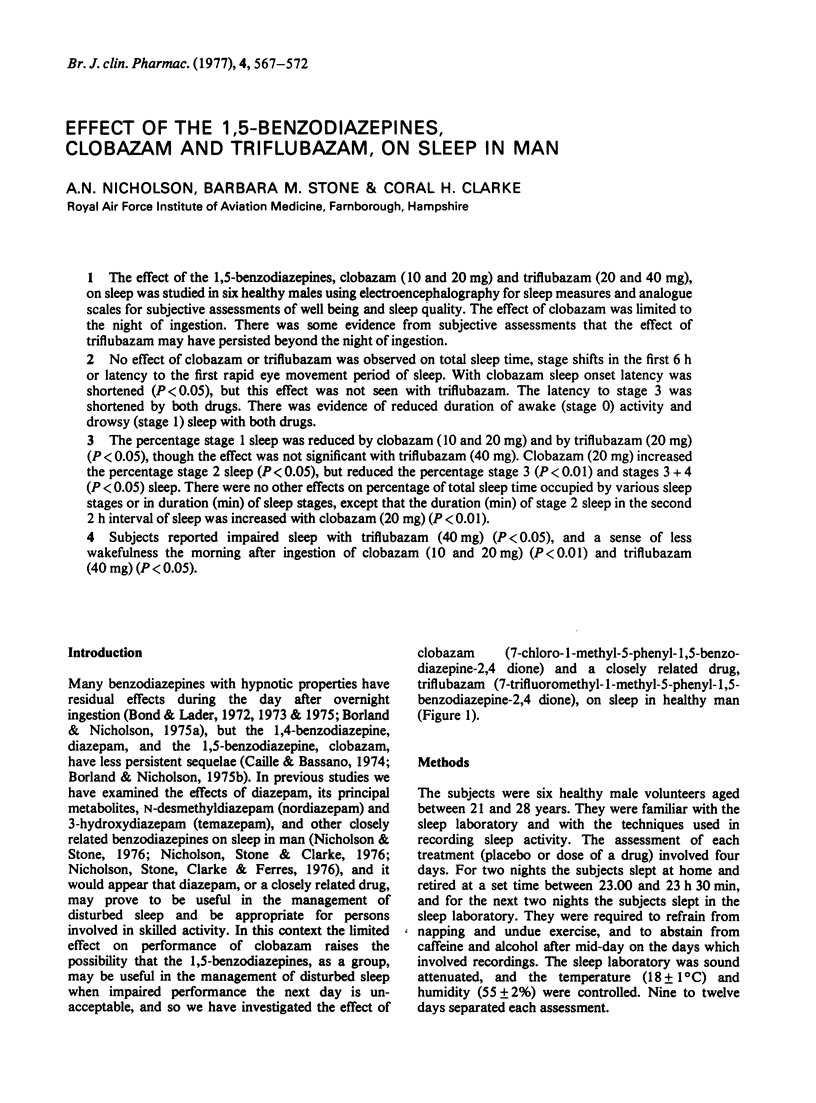
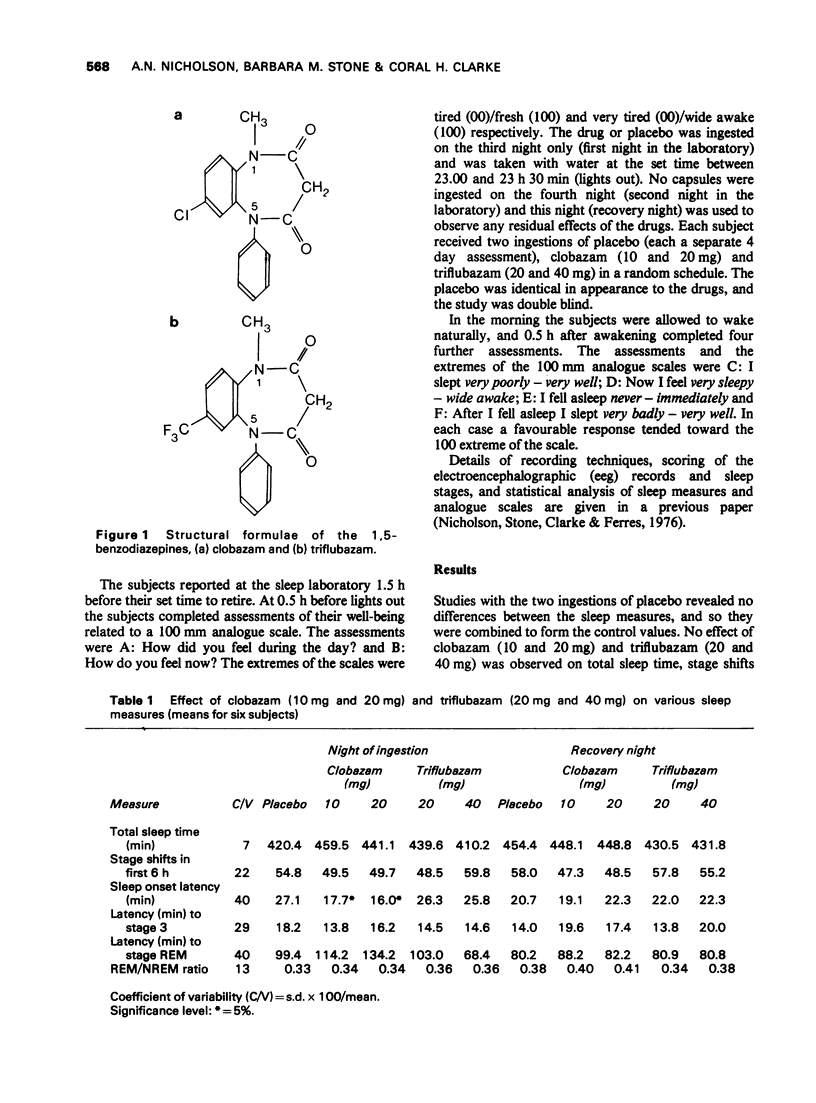
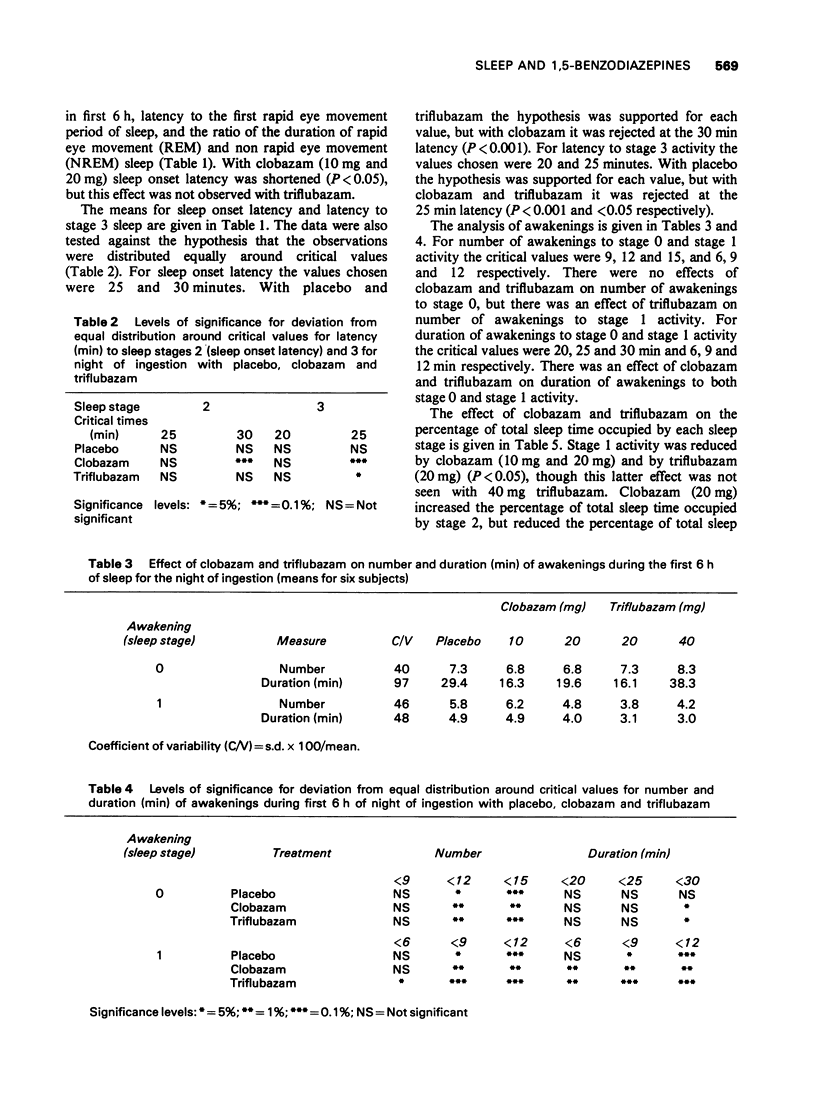
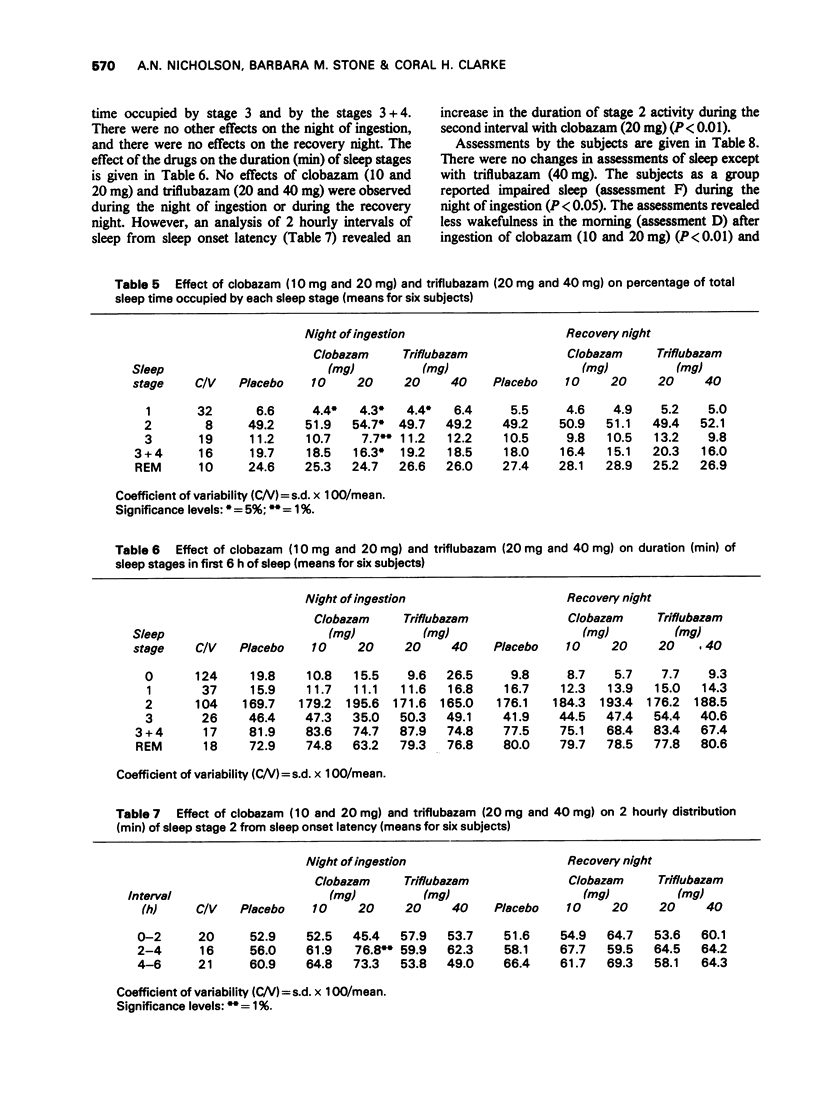
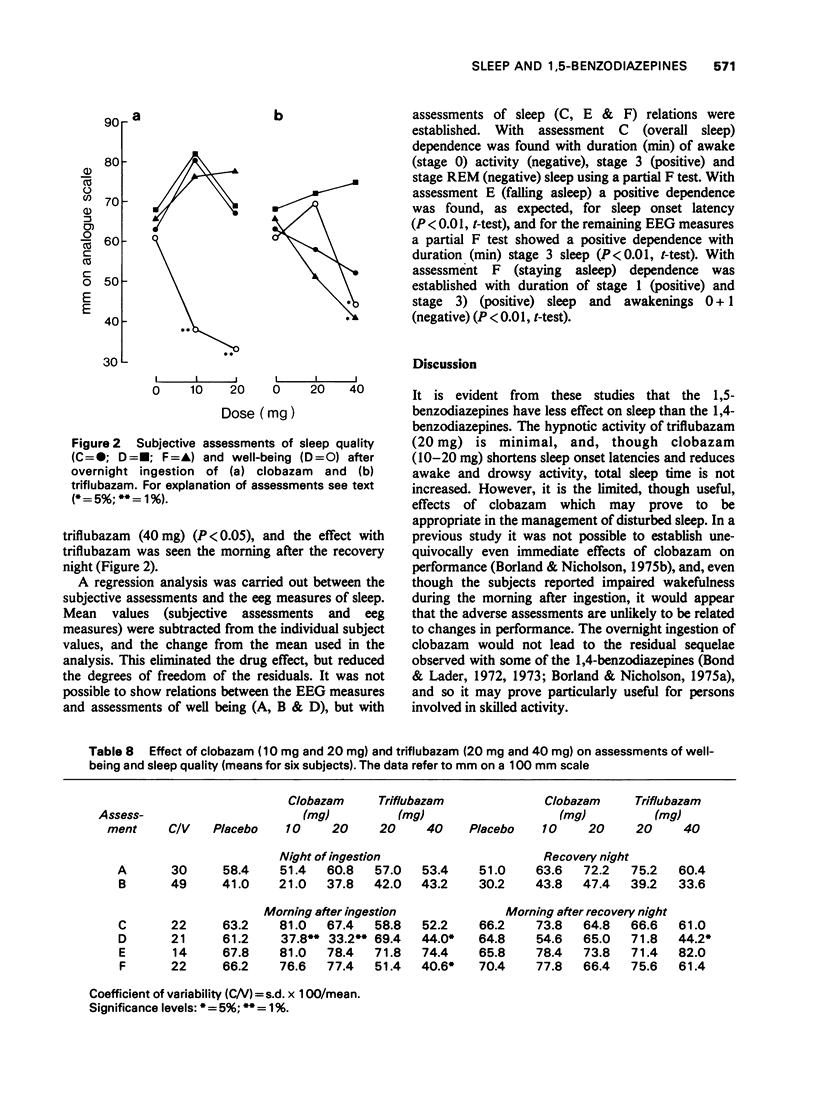
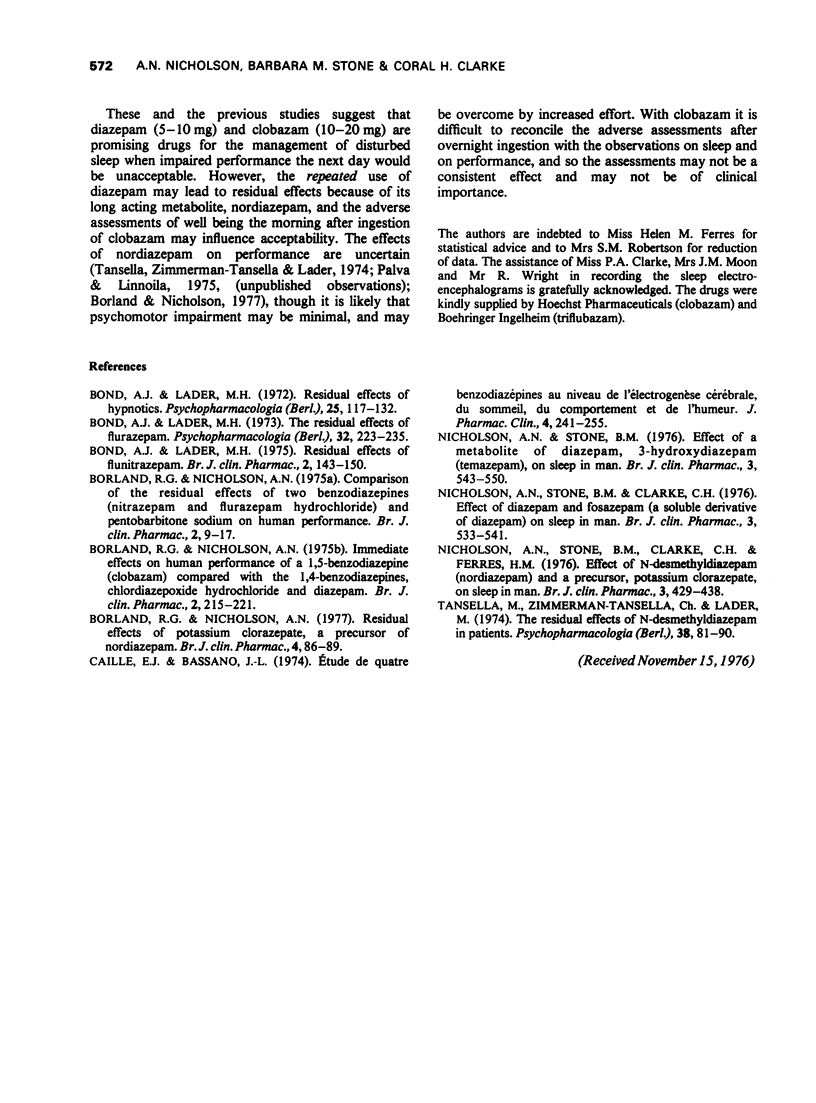
Selected References
These references are in PubMed. This may not be the complete list of references from this article.
- Bond A. J., Lader M. H. Residual effects of flunitrazepam. Br J Clin Pharmacol. 1975 Apr;2(2):143–150. doi: 10.1111/j.1365-2125.1975.tb01569.x. [DOI] [PMC free article] [PubMed] [Google Scholar]
- Bond A. J., Lader M. H. Residual effects of hypnotics. Psychopharmacologia. 1972;25(2):117–132. doi: 10.1007/BF00423189. [DOI] [PubMed] [Google Scholar]
- Bond A. J., Lader M. H. The residual effects of flurazepam. Psychopharmacologia. 1973 Sep 28;32(3):223–235. doi: 10.1007/BF00422145. [DOI] [PubMed] [Google Scholar]
- Borland R. G., Nicholson A. N. Comparison of the residual effects of two benzodiazepines (nitrazepam and flurazepam hydrochloride) and pentobarbitone sodium on human performance. Br J Clin Pharmacol. 1975 Feb;2(1):9–17. doi: 10.1111/j.1365-2125.1975.tb00465.x. [DOI] [PMC free article] [PubMed] [Google Scholar]
- Borland R. G., Nicholson A. N. Immediate effects on human performance of a 1,5-genzodiazepine (clobazam) compared with the 1,4-benzodiazepines, chlordiazepoxide hydrochloride and diazepam. Br J Clin Pharmacol. 1975 Jun;2(3):215–221. doi: 10.1111/j.1365-2125.1975.tb01578.x. [DOI] [PMC free article] [PubMed] [Google Scholar]
- Borland R. G., Nicholson A. N. Residual effects of potassium clorazepate, a precursor of nordiazepam. Br J Clin Pharmacol. 1977 Feb;4(1):86–89. doi: 10.1111/j.1365-2125.1977.tb00675.x. [DOI] [PMC free article] [PubMed] [Google Scholar]
- Nicholson A. N., Stone B. M., Clarke C. H., Ferres H. M. Effect of N-desmethyldiazepam (nordiazepam) and a precursor, potassium clorazepate, on sleep in man. Br J Clin Pharmacol. 1976 Jun;3(3):429–438. [PMC free article] [PubMed] [Google Scholar]
- Tansella M., Zimmermann-Tansella C., Lader M. The residual effects of N-desmethyldiazepam in patients. Psychopharmacologia. 1974;38(1):81–90. doi: 10.1007/BF00421290. [DOI] [PubMed] [Google Scholar]


